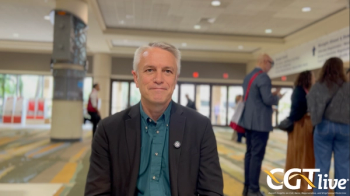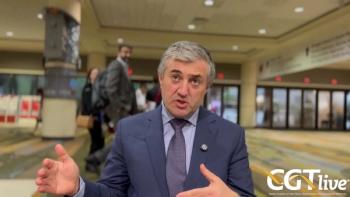
David Weinstein, MD, on Delivering Gene Therapy Directly to the Brain
The senior vice president of clinical development at Passage Bio discussed intracisternal magna administration of PBGM01.
“The brain has been a hard target because of the blood brain barrier. In order to get gene therapy into the brain, higher doses had to be used, and there was higher risk of toxicity using traditional approaches. I think the ICM approach shows us an alternative way. We’re able to use a dose of the vector much lower than has been used in prior trials and because we're injecting directly into the CSF, we're able to treat people who have preexisting antibodies.”
The first 2 children with GM1 gangliosidosisdosed in the phase 1/2 IMAGINE-1 trial (NCT04713475) have achieved and regained developmental milestones after being dosed with intracisternal magna administration of PBGM01, according to data presented by David Weinstein, MD, senior vice president, clinical development, Passage Bio, at the 18th Annual WORLDSymposium in February 2022.
The gene therapy seems to be well-tolerated, with no serious adverse events (AEs) and mostly mild AEs unrelated to treatment. Both children exhibited substantial (1.5- and 4.8-fold) and durable increases in cerebrospinal fluid CSF β-gal, as well as stabilized or decreased GM1 ganglioside levels. The participants also achieved developmental gains substantially differing from natural history on the Vineland-II and Bayley-III scales. The first patients in the second (early-onset) and third cohort (high-dose) have now also been dosed.
CGTLive spoke with Weinstein to learn more about the ICM administration of PBGM01. He also discussed a gene therapy trial in Krabbe disease also administered via ICM.
REFERENCE
Weinstein DA, Day-Salvatore DL, Ficicioglu C, et al. Safety, biomarker and preliminary efficacy results following ICM administration of PBGM01 in children with late onset infantile GM1-gangliosidosis. Presented at: 18th Annual WORLDSymposium, February 7-11, 2022; San Diego, CA. Poster #LB-71
Newsletter
Stay at the forefront of cutting-edge science with CGT—your direct line to expert insights, breakthrough data, and real-time coverage of the latest advancements in cell and gene therapy.





































